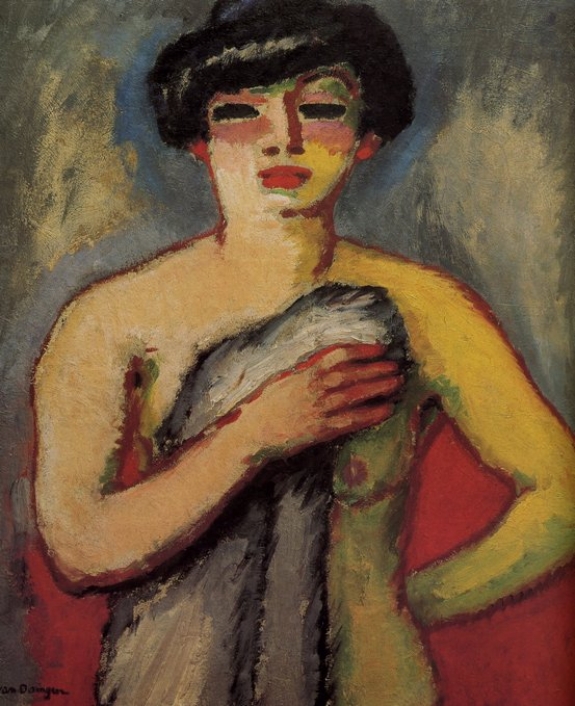Not every Dutch artist who came to Paris failed, went mad, sliced off his ear and killed himself.
Kees van Dongen (1877-1968), who arrived in 1899, some 13 years after Van Gogh, was tremendously successful and became the portraitist of the Roaring Twenties.
The exhibition at the Musee d’Art Moderne de la Ville de Paris, which was first seen in Rotterdam, Van Dongen’s birthplace, covers the first half of his career, up to 1931.
Ignoring his later work, which is more conventional and often banal, also spares the organizers the trouble of dealing with the low point of his career -- his trip to Nazi Germany in 1941 as a guest of the regime. After the war, he and his fellow travelers were temporarily excluded from the Salon.
Van Dongen didn’t start out as a society painter. In his young years, he was an avowed anarchist.
Picasso, whose neighbor he was in the legendary cluster of shabby Montmartre studios, nicknamed him -- after the blue- blooded Russian agitator -- “the Kropotkin of the Bateau- Lavoir.” Together they explored Paris nightlife, the cabarets, brothels and watering holes.
Fernande Olivier, Picasso’s mistress, became Van Dongen’s model. In response to Picasso’s five “Les Demoiselles d’Avignon,” he came up with twice as many “Tabarin Wrestlers,” muscular ladies you wouldn’t want to mess with.
Van Dongen did his best to conceal the fact that he was a brilliant draftsman and that he had worked as a cartoonist for magazines. He preferred to be viewed as having miraculously emerged from nowhere as a painter.
Wild Beasts
In 1905, he appeared with Matisse, Derain, Vlaminck and others in the historic Salon d’Automne that led a horrified critic to attack them as “fauves,” or wild beasts.
In a way, Van Dongen was the wildest of the beasts. His deliberate primitivism, crude vigor and strident colors were close to the German Expressionists. No wonder German galleries welcomed him with open arms.
Another scandal broke out at the 1913 Salon d’Automne: The police removed as obscene a nude of his wife Guus with the black triangle of her pubic hair very much in evidence. In 1920, Anatole France, probably the country’s most revered writer, was shocked to find out that his neighbor had portrayed him as a decrepit old man.
At that time, Van Dongen had moved to a chic private street near the Bois de Boulogne where he lived with Lea Jacob, manager of the haute couture house Jenny, who introduced him to Parisian high society.



